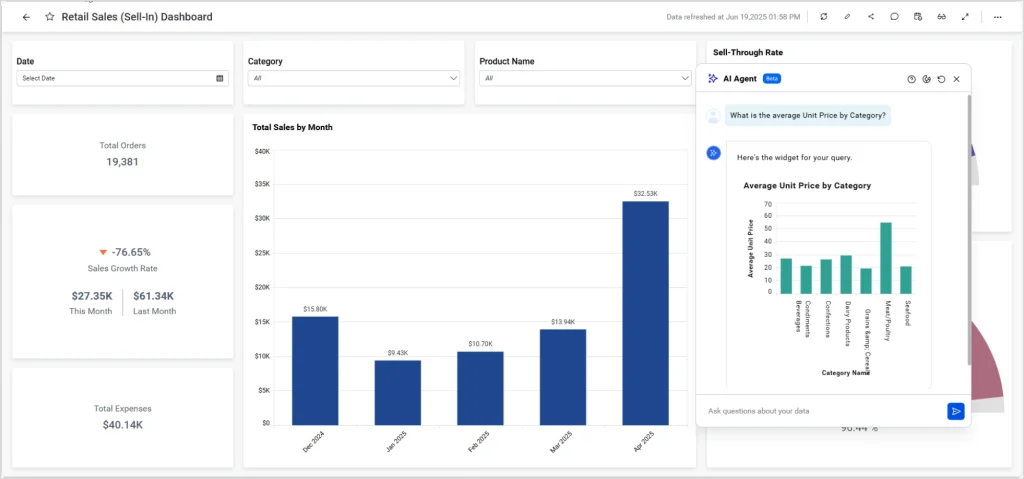Let’s be honest. For a small business owner, predicting sales can feel like reading tea leaves. You stare at last month’s spreadsheet, factor in a hunch about the economy, cross your fingers, and hope you order the right amount of inventory. It’s stressful. And frankly, it’s a gamble.
But what if you had a crystal ball that actually worked? That’s essentially what AI-powered sales forecasting is becoming for businesses like yours. It’s not science fiction anymore. It’s an accessible, surprisingly affordable tool that’s leveling the playing field.
What Exactly Is AI Sales Forecasting? (And What It Isn’t)
First off, let’s demystify it. AI-powered sales forecasting isn’t a robot telling you what to do. Think of it more as a super-smart assistant. It analyzes your historical sales data—the stuff you already have sitting in your point-of-sale system or CRM—and finds patterns a human brain would almost certainly miss.
It looks at seasonality, the impact of past marketing campaigns, even external factors like local weather or holidays. Then, it uses machine learning to project future sales with a degree of accuracy that old-school methods just can’t touch. It’s the difference between guessing and informed predicting.
Why Your Gut Feeling Isn’t Enough Anymore
Sure, your intuition is valuable. You built this business, after all. But intuition has blind spots. It’s influenced by your most recent wins or losses—what psychologists call “recency bias.” It can’t process thousands of data points simultaneously.
Here’s the deal: the market is moving too fast to rely on gut checks alone. An AI model can tell you that sales of your blue widgets consistently spike 10 days after a specific social media ad campaign runs, and that this effect is 25% stronger when it rains. That’s… not something you’d just intuit.
The Tangible Benefits: More Than Just a Number
So what do you actually get from this? The benefits ripple across your entire operation.
- Smarter Inventory Management: No more cash tied up in slow-moving stock or frantic, last-minute orders for your best-sellers. You buy what you know you’ll need.
- Sharper Cash Flow Planning: Knowing your future revenue means you can confidently plan for big expenses—a new piece of equipment, a hire, a marketing push—without losing sleep.
- Maximized Marketing ROI: You can allocate your budget to the channels and campaigns that the data shows actually drive sales, not just likes.
- Reduced Stress and Burnout: Honestly, this might be the biggest win. Replacing uncertainty with data-driven confidence is a game-changer for your mental health as an entrepreneur.
Getting Started: It’s Simpler Than You Think
You might be imagining a team of data scientists and a massive server room. Stop. The beauty of modern AI for small business is that it’s baked into software you might already be using or can easily adopt.
Many CRM platforms, e-commerce tools, and dedicated small business analytics apps now have AI forecasting features built right in. The key is to start with clean, organized data. The old “garbage in, garbage out” rule definitely applies here.
| Your First Steps | What to Look For |
| 1. Audit Your Tools | Check if your current software (like Shopify, HubSpot, or Square) has forecasting features you aren’t using. |
| 2. Clean Your Data | Ensure your sales records are consistent. Categorize products and services clearly. |
| 3. Start Small | Don’t try to forecast everything at once. Pick one product line or service to model first. |
| 4. Trust, But Verify | Use the AI’s predictions to inform your decisions, but keep comparing them to actual results. The model learns and improves over time. |
Common Hurdles (And How to Leap Over Them)
Okay, so it’s not all sunshine and rainbows. You’ll likely face a couple of mental roadblocks. The first is cost. But many powerful tools are subscription-based and scale with your business, making the initial investment manageable. Think of it as hiring a part-time forecasting analyst for a fraction of the cost.
The second hurdle is trust. It’s hard to hand over the reins to an algorithm. The best way to overcome this? Start using it in low-stakes scenarios. Let it predict next week’s sales for your cafe. See how it performs. You’ll build confidence as you see its accuracy—and your own decisions—improve.
The Human Element: You’re Still the Captain
This is the most important part. AI provides the map, but you’re still steering the ship. The technology gives you the “what,” but you bring the “why.” Maybe the forecast predicts a dip, but you know a major local event is happening that the AI couldn’t factor in. That’s where your expertise comes in.
The magic happens in the combination—the synergy between cold, hard data and your warm, on-the-ground knowledge. It’s a partnership. The AI handles the tedious number-crunching, freeing you up to do what you do best: strategize, connect with customers, and innovate.
In the end, embracing AI-powered forecasting isn’t about becoming less human in your business. It’s about becoming more strategic. It’s about swapping out the anxiety of the unknown for the quiet confidence of being prepared. And in today’s whirlwind economy, that’s not just a smart move—it might just be the one that sets you apart for good.


